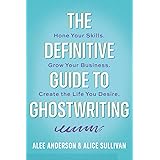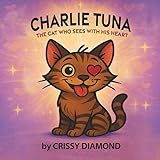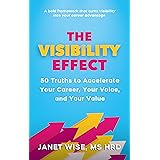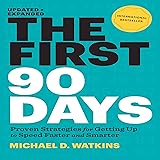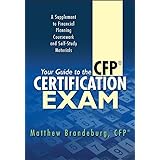Are you navigating the intensely competitive landscape of investment banking recruitment, seeking to secure a coveted role that promises not only significant financial reward but also unparalleled career progression? The journey to a six-figure starting salary and the potential for millions can often feel like an insurmountable challenge, particularly when applications seem to vanish into an abyss. The video above provides a foundational strategy for effective networking, a critical component often overlooked by aspiring bankers. This detailed guide expands upon those insights, offering a more profound exploration into the intricacies of networking for investment banking jobs, designed to equip you with the advanced tactics necessary to differentiate yourself and secure those highly sought-after offers.
Mastering the Art of Investment Banking Networking
The pursuit of a role within bulge bracket firms like J.P. Morgan, Goldman Sachs, or Morgan Stanley demands a meticulously crafted networking strategy. It is commonly understood that the sheer volume of applications received by these institutions renders a “spray and pray” approach largely ineffective. Instead, a targeted, relationship-centric methodology is paramount. Success in securing an investment banking position, frequently valued at upwards of $150,000, is often directly correlated with the strength and depth of one’s professional network.
Constructing Your Strategic Contact Compendium
The initial phase of any robust networking initiative involves the systematic compilation of a contact list. As highlighted in the video, a “hot to cold” approach is not merely a suggestion but a strategic imperative. This method ensures that your initial outreach attempts are directed towards individuals with whom a pre-existing connection, however tenuous, may facilitate a warmer introduction.
For instance, one might commence by cataloging immediate contacts such as friends, family members, or personal acquaintances who possess direct or tangential links to the finance industry. Subsequently, the focus shifts to institutional alumni. A strong affiliation with a specific academic institution, particularly if a shared club or society is identified, often lowers the barrier to initial communication. Data suggests that alumni connections typically yield a higher response rate compared to entirely unsolicited outreach, often due to a shared understanding of institutional values and experiences.
Conversely, once these more accessible avenues have been thoroughly exhausted, attention may then be directed towards “cold” outreach. Here, the identification of less obvious commonalities becomes crucial. This could encompass shared prior internship experiences, identical collegiate majors, or even a similar geographic background. Leveraging advanced search functionalities on platforms such as LinkedIn Sales Navigator or specialized tools like Findymail can prove invaluable in locating professional email addresses, thereby enhancing the probability of direct engagement. Alternatively, for those operating with budgetary constraints, a simple Google search for common firm email formats (e.g., first.last@firmname.com) often yields actionable intelligence. Tools such as Dex, which aggregates contacts from disparate sources, are increasingly being adopted to streamline this process, allowing for efficient categorization and tracking of potential leads.
Precision in Outreach: Beyond Generic Communication
The efficacy of your outreach messaging is arguably the most critical determinant of securing an initial conversation. Bankers within top-tier firms are frequently inundated with hundreds of networking requests weekly. Consequently, a generic, uninspired message is almost invariably consigned to oblivion. This necessitates a profound commitment to personalization, demonstrating a thorough understanding of the recipient’s professional trajectory and interests.
For example, instead of merely stating an interest in investment banking, a candidate might reference a specific deal or transaction in which the banker was involved, or commend a particular achievement highlighted on their LinkedIn profile. Such detail-oriented approaches signal genuine interest and a proactive research ethic, qualities highly valued in a demanding environment where individuals often work 80 to 100+ hours per week. A message, ideally constrained to five to seven sentences, should be succinct, respectful, and overtly state the modest request for a 15-minute informational chat. An appended, “banker-friendly” resume, meticulously formatted for clarity and conciseness, further reinforces professional readiness and provides immediate context for the recipient.
Prior to any scheduled discussion, the proactive dispatch of a confirmation email—typically 24 hours in advance—serves multiple strategic purposes. This seemingly minor gesture not only acts as a courteous reminder to an exceptionally busy professional, potentially averting scheduling conflicts or forgotten appointments, but also implicitly communicates an elevated degree of organization and foresight. In an industry where “the game of inches” often dictates outcomes, such impressions contribute incrementally yet significantly to a candidate’s perceived professionalism.
Cultivating Connection: The Art of the Informational Interview
The informational interview itself represents the zenith of the networking process, yet it is also the juncture at which many candidates falter. A common pitfall involves treating the conversation as a rigid question-and-answer session, replete with easily discoverable information. Conversely, the true objective is to foster a genuine human connection, one that leaves the banker with the distinct impression that they would enjoy working alongside you. This paradigm shift from interrogation to engagement is crucial.
Industry veterans often advocate for dedicating a substantial portion of the conversation, approximately 50 to 80 percent, to personal rapport building rather than solely focusing on the technicalities of the role or the bank’s operational specifics. For instance, rather than immediately delving into questions about deal flow, an aspirant might initiate the discussion by inquiring about their weekend activities or a pertinent cultural event, such as recent NBA playoff outcomes. As the conversation progresses, active listening becomes paramount. Noticing a banker’s mention of their alma mater or a past hobby (e.g., “played club basketball at Duke”) provides organic opportunities for follow-up questions that delve into shared interests. This allows for an authentic dialogue, where the flow is more akin to a natural discussion with a colleague rather than a formal interview.
Consider a scenario where a banker mentions their university and an extracurricular sport. A candidate might inquire, “I noted your time at Duke and your involvement with basketball; do banking hours permit you to continue playing?” This line of questioning, rather than being perceived as intrusive, can lead to revelations about group culture, work-life integration efforts, and the specific dynamics within their team—insights far more valuable than any information gleaned from a generic online search. Such nuanced interactions are instrumental in building a memorable profile and establishing the groundwork for future advocacy within the firm.
The Continuum of Engagement: Follow-Up and Sustained Relationships
The conclusion of an informational interview merely marks a transition point, not an endpoint, in the networking continuum. The prompt dispatch of a thank-you email within 24 hours is non-negotiable. This communication, concise and specific in its reference to enjoyed aspects of the conversation, serves to reinforce the positive impression and reiterate gratitude for the banker’s valuable time.
More significantly, if the conversation has yielded positive rapport, the thank-you email presents a strategic opportunity to request a referral to another professional within the firm. The successful acquisition of such a referral is a strong indicator of effective relationship building and significantly enhances one’s visibility within the institution. Furthermore, maintaining periodic contact, particularly when significant milestones are achieved (e.g., securing an interview, progressing to a Superday), ensures the relationship remains active. This not only keeps you top-of-mind but can also elicit invaluable advice or mentorship. Even in instances where an immediate offer is not extended, a well-cultivated relationship preserves the potential for future opportunities, positioning you favorably for subsequent recruiting cycles as your experience accrues.



